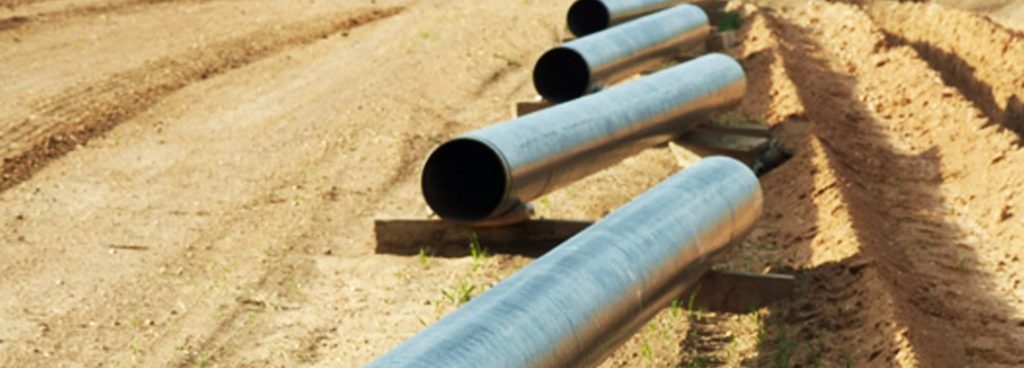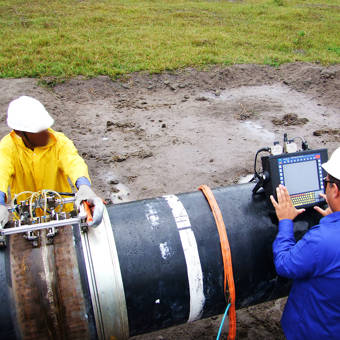Comprehensive Summary of Pipe Welding Assessment Treatments
In the realm of pipeline building, making certain the stability and security of welded joints is vital. Pipe welding inspection procedures play a critical duty in assuring that welded connections satisfy rigid sector criteria and requirements. From precise pre-welding evaluations to detailed post-weld evaluations, a distinct assessment procedure is important for keeping the architectural strength of pipes. Comprehending the ins and outs of welding examination treatments is not just a governing demand however also an essential aspect of upholding the integrity of these essential frameworks.
Pre-welding Evaluation Preparations
Before commencing the welding process, detailed pre-welding examination preparations are crucial to make sure the stability and quality of the weld joint. These prep work entail a thorough assessment of the materials to be bonded, the welding devices, and the job atmosphere. By conducting thorough pre-welding examination prep work, potential issues can be recognized and solved early on, leading to premium and reputable weld joints.
Welding Procedure Credentials
Complete pre-welding evaluation preparations lay the structure for the vital process of Welding Treatment Qualification, making certain the stability and quality of the weld joint. Welding Treatment Qualification (WPQ) is a crucial step in the welding process that involves testing and licensing welding procedures to ensure they meet certain criteria and needs. The WPQ process normally includes welding treatment spec development, welding treatment credentials testing, and paperwork of the results.
Throughout welding procedure spec growth, important information such as the welding procedure, welding materials, joint style, and welding parameters are defined to produce a thorough procedure. Consequently, welding treatment certification screening is performed to validate the recommended treatment's integrity. This testing commonly entails welding test vouchers that undergo numerous mechanical and non-destructive examinations to assess the weld's quality and adherence to the specified requirements.
In-process Weld Examination
Throughout the welding process, in-process weld evaluation plays an essential role in guaranteeing the quality and honesty of the weld joint - Pipeline Welding Inspection. This type of assessment involves checking the welding parameters, analyzing the weld grain development, and spotting any type of potential problems or gaps as they happen. By conducting in-process weld evaluations, welding operators can quickly address any concerns that may arise, thereby preventing further issues and making certain that the final weld meets the needed specifications
Common approaches used for in-process weld examination include visual examination, fluid penetrant testing, magnetic fragment screening, ultrasonic screening, and radiographic testing. In general, in-process weld assessment is essential for keeping the high quality and dependability of bonded pipelines.
Non-destructive Testing (NDT)
Non-destructive Screening (NDT) is a vital technique employed in pipe welding inspection to evaluate the stability of weld joints without creating damages to the welded structure. By using different NDT strategies, assessors can evaluate the top quality of welds and determine any kind of defects or gaps that may compromise the architectural sturdiness of the pipe. Usual NDT approaches used in pipeline welding assessment consist of Radiographic Screening (RT), Ultrasonic Screening (UT), Magnetic Bit Checking (MPT), Liquid Penetrant Testing (LPT), and Visual Testing (VT)
RT entails the usage of X-rays or gamma rays to create pictures of the internal framework of the weld, enabling examiners to detect flaws such as porosity, fractures, or insufficient blend. Furthermore, VT includes visual inspection of welds to determine any noticeable imperfections.
Post-weld Examination and Documents


Documentation of post-weld inspection searchings for is important for keeping high quality control records and ensuring compliance with market standards and guidelines. Detailed records need to include details about the assessment methods utilized, the area and nature of any directory type of defects found, and any restorative activities taken - Pipeline Welding Inspection. Proper paperwork not only serves as a document of the weld's top quality but likewise help in future upkeep and evaluation processes
Verdict

Finally, pipeline welding examination procedures play a vital role in making certain the high quality and honesty of welds. From pre-welding evaluations to post-weld documents, each step is vital in keeping the security and performance of pipelines. By complying with well established treatments and conducting comprehensive click to read more assessments, possible defects can be determined and attended to prior to they bring about expensive fixings or failures. Overall, adherence to appropriate assessment procedures is vital to the success of pipeline welding jobs.
From precise pre-welding evaluations to extensive post-weld assessments, a well-defined evaluation procedure is vital for preserving the structural soundness of pipelines. By performing in-process weld inspections, welding operators can without delay resolve any kind of problems that may arise, thus avoiding further flaws and ensuring that the final weld fulfills the needed specifications.
Common approaches made use of for in-process weld evaluation consist of visual assessment, liquid penetrant screening, magnetic fragment screening, ultrasonic testing, and radiographic screening.Non-destructive Testing (NDT) is a crucial approach employed in pipe welding assessment to evaluate the integrity of weld joints without triggering damage to the bonded structure. Post-weld examination involves different methods to analyze the check that welds for problems, consisting of aesthetic evaluation, color penetrant testing, magnetic fragment testing, ultrasonic screening, and radiographic testing.